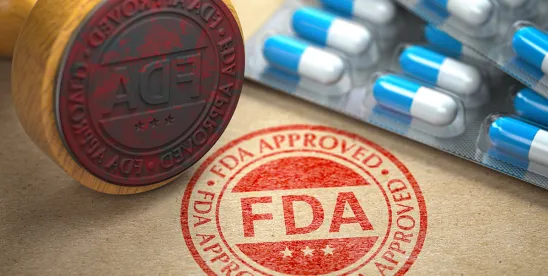The Supreme Court’s decision in June 2024 in Loper Bright Enterprises v. Raimondo and Relentless Inc. v. Department of Commerce to overrule the Chevron doctrine has major implications for every administrative agency, including the U.S. Food & Drug Administration (FDA).
Background
The Chevron doctrine was a two-step framework used to review an agency’s interpretation of a statute in a rule or regulation. First, was the statute clear, or was it ambiguous? Second, if the statute was ambiguous, is the agency’s interpretation based on a “permissible construction of the statute”? Under the Chevron doctrine, a court need not interpret the statute in the same way as the agency, as long as the agency took a permissible construction that would then be given deference by the court.
With Loper overruling the Chevron doctrine, the courts need no longer defer to permissible agency interpretations. Rather, “courts need not and under the [Administrative Procedures Act] may not defer to an agency interpretation of the law simply because a statute is ambiguous.”
What are the Implications for the FDA Guidance Documents?
Regulations enacted by the FDA via notice-and-comment rulemaking will no longer be subject to the deference accorded by Chevron. However, another key part of the FDA regulatory agenda is guidance documents, which set forth the FDA’s interpretation of statutory or regulatory requirements but are nonbinding.[1] In the first seven months of 2024, the FDA published over 100 guidance documents (draft or final). In contrast to this, fewer than 30 rules have been issued or amended by the FDA in the same time period.
Guidance documents are revised or withdrawn as the interpretations of the agency change, and are set forth on topics including specific products, design, manufacturing, and labeling, and enforcement policies. For example, in January 2024 the Center for Drug Evaluation and Research (CDER) within the FDA put forth a list of dozens of guidance documents planned for the remainder of 2024. Guidance documents cover categories including administration, biosimilars, drug safety, and generics. Despite being non-binding, quantitative data analysis has shown that stakeholders do follow the guidance set forth by the FDA, such as in Alzheimer’s research trials in which trial designers follow the FDA recommended guidelines.
Many questions remain in light of Loper. For example, the FDA may look to issue even more guidance documents rather than pursue more formal notice-and-comment rulemaking. Because stakeholders typically follow these nonbinding policies, they could be a preferable option to a regulation that might be scrutinized more quickly and be overturned by a court taking a different interpretation of a statute. On the other hand, to the extent that compliance with a guidance document is voluntary, FDA’s enforcement mechanisms are more limited than would be the case with conduct required under a regulation. To the extent a court might construe compliance with the guidance as something less than voluntary, Loper might be argued as a basis for court review of the guidance, assuming other conditions allowing suit could be satisfied.





 />i
/>i
